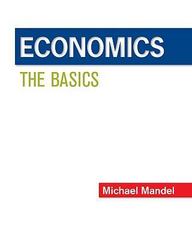Question
Problem Set #2 - Clearly provide (typed or handwritten) your response to each question. This assignment is worth 10 points, graded on both completion and
Problem Set #2 -
Clearly provide (typed or handwritten) your response to each question. This assignment is worth 10 points, graded on both completion and accuracy, and to be turned in at the start of class. Emailed submissions will be deducted 1 point, late submissions will be deducted a letter grade for each day late, and assignments turned in beyond 2 class periods will receive a zero. Complete sentences are not required, but you should show your work and include correctly labeled graphs to support your answer. You may collaborate with peers on this assignment; however, you must turn in your own individual work (i.e. no two submissions should be identical). Responses that sound like AI will not receive credit.
- Wage Inequality: Explain what effect each of the following proposed changes will have on wage inequality in the US.
- Indexing the minimum wage to inflation.
- Increasing the benefit level paid to welfare recipients.
- Increasing wage subsidies paid to firms that hire low-skill workers.
- Removing tariffs on imported goods from China.
- Intergenerational Mobility: Explain what effect each of the following proposed changes will have on intergenerational mobility.
- Reduce funding for state universities.
- Implement a federal inheritance tax.
- Eliminate legacy admissions to elite colleges and universities.
- Increase taxes among married couples.
- Compensating Wage Differentials: Consider a competitive labor market that has four different jobs that vary by their wage and risk level. The table below describes each of the four jobs.
Job | Risk (r) | Wage (w) |
A | 1 5 | $3 |
B | 1 4 | $12 |
C | 1 3 | $23 |
D | 1 | $25 |
All workers are equally productive, but workers vary in their preferences. Consider a worker who values his wage and the risk level according to the utility function:
1
u w r( , )= +w 2.
r
- Where does the worker choose to work?
- Suppose the government regulated the workplace and required all jobs to have a risk factor of 1/5 (i.e., all jobs become A jobs). What wage would the worker now need to earn in the A job to be equally happy following the regulation?
- Education I: Peter lives for three periods. He is currently considering three alternative education-work options. He can start working immediately, earning $100,000 in Period 1, $110,000 in Period 2 (as his work experience leads to higher productivity), and $90,000 in Period 3 (as his skills become obsolete and physical abilities deteriorate). Alternatively, he can spend $50,000 to attend college in Period 1 and earn $180,000 in Periods 2 and 3. Finally, he can receive a doctorate degree in Period 2 after completing his college education in Period 1. This last option will cost him nothing when he is attending graduate school in the second period as his expenses on tuition and books will be covered by a research assistantship. After receiving his doctorate, he will become a professor in a business school and earn $400,000 in Period 3.
- If Peter's discount rate is 20% per period, what education path maximizes Peter's net present value of his lifetime earnings? You can use Excel or another program to calculate the net present value, but be sure to write the equation with the appropriate numbers.
- What if the discount rate is 10% per period instead? You can use Excel or another program to calculate the net present value, but be sure to write the equation with the appropriate numbers.
- Finally, going back to scenario A, what if Peter lives for four periods and in period four his earnings are the same as period 3? You can use Excel or another program to calculate the net present value, but be sure to write the equation with the appropriate numbers.
- Education II: Suppose Carol's wage-schooling locus is given by
Years of Schooling | Earnings |
9 | $18,500 |
10 | $20,350 |
11 | $22,000 |
12 | $23,100 |
13 | $23,900 |
14 | $24,000 |
- Derive the marginal rate of return schedule. When will Carol quit school if her discount rate is 4%? What if the discount rate is 9%?
- Describe the two competing theories that explain how education and wages are related. What are the policy implications of these two theories?
- Discrimination: A firm's production function is given by
= 40( + + 1),
where and are the number of white workers and Black workers employed by the firm, respectively. From this, it can be shown that the marginal product of labor is
= 40 / + + 1
Suppose the market wage for Black workers is $50, the market wage for white workers is $100, and the price of each unit of output is $20.
- How many workers of each race would a non-discriminating firm hire? How much profit is earned if there are no other costs?
- How many workers of each race would a firm with a discrimination coefficient of 0.6 against Blacks hire? How much profit is earned if there are no other costs?
- How many workers of each race would a firm with a discrimination coefficient of 1.2 hire? How much profit is earned if there are no other costs?
Step by Step Solution
There are 3 Steps involved in it
Step: 1

Get Instant Access to Expert-Tailored Solutions
See step-by-step solutions with expert insights and AI powered tools for academic success
Step: 2

Step: 3

Ace Your Homework with AI
Get the answers you need in no time with our AI-driven, step-by-step assistance
Get Started


